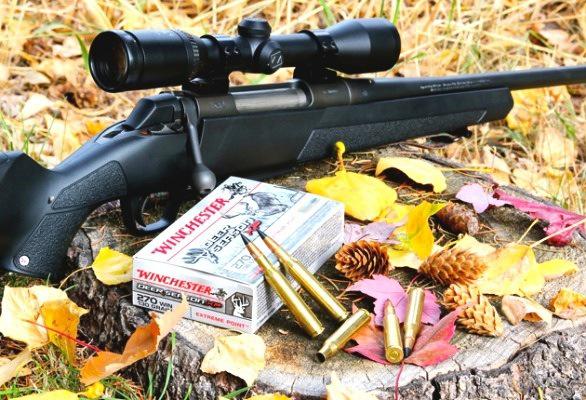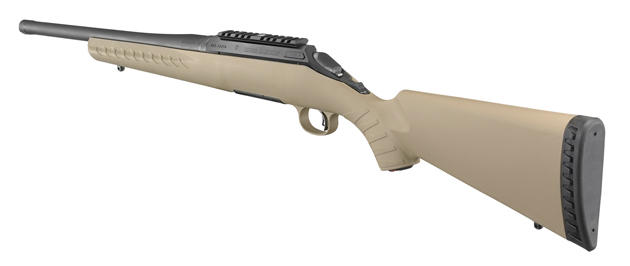From the March/April 2015 issue of Sporting Classics.
They’re black, homely, half-plastic, and cheap. God bless ’em. Call them abominations, insults to American gun-making, or Cheap-Mart specials, but appreciate them because today’s starter bolt-action rifles are an important component in protecting wildlife and maintaining our rights to hunt and shoot.
Connoisseurs of exhibition-grade walnut, 22-line hand checkering and steel, one-piece bottom metal may never love bolt-actions such as the Ruger American, Savage Axis, and Winchester XPR, but thousands of kids and middle-class workers surely do. For $300 to $600, these basic rifles and others like them are an affordable entry into the world of shooting and hunting. With today’s costs for boots, clothing, optics, licenses, ammunition, and—sadly—access privileges, it’s more important than ever that firearms be affordable. Protecting our 2nd Amendment rights would be difficult without the political support of millions of middle-class gun owners. Maintaining our fish and game departments and defending our right to hunt also would be impossible.
Safety in numbers.
Despite today’s collector value of early lever-actions, pre-64 Winchesters, and Savage M99s, those and most rifles made in the 20th century were originally priced within reach of the average American. Certainly, there were high-end options and expensive, full-on custom rifles, but because access to forests and fields was basically free and wide open, most hunters found the means to purchase a deer rifle, a shotgun or two, and a .22 rimfire. With such an arsenal, the 20th-century sportsman could still-hunt the woods for deer, tramp the fields for pheasants and quail, wade the wetlands for ducks and geese, and take the kids out for gray squirrels and cottontails.
It was this affordability and accessibility that forged early American conservation ideas into our durable and highly successful North American Model of Wildlife Management, a program of hunter-funded conservation that not only
saved multiple species from extinction, but also fueled their resurgence to abundance. The return of pronghorns, whitetails, elk, moose, turkeys, geese, and more made it possible to bring back large predators such as grizzlies, cougars, and wolves. The millions of dollars raised from license fees and excise taxes on guns and ammunition funded most of this. And ordinary, working American hunters paid for most of it.
Today, with cities bursting at the seams and spilling recklessly into rural landscapes, and with more highways and reservoirs and citizens shouting for food, energy, and toys, our wildlife and wild places are again at risk, as never before. We need inexpensive, accessible rifles to help recruit and retain more hunters who will beat the drum for gun rights and conservation while funding ongoing wildland restoration and protection. The new starter rifles that sell for as little as $300 help them do this.
In an era when running shoes sell for hundreds of dollars and bicycles for thousands, how can rifles go for so little? Aside from their flexible, molded thermoplastic stocks, what makes these bolt actions so cheap? And are they worth even that price?
Common to the genre are tubular receivers drilled from bar-stock steel. Similarly, bolt bodies are simple tubes with locking lugs attached up front, bolt handles near the back. Ejection ports are usually narrow and marketed as more rigid than traditional, open-topped receivers. That’s true, but the main reason they’re made that way is to reduce production time and costs. The downside to narrow ejection ports is access. It’s difficult to single-load cartridges at the range, clear jams, or dig stuck cartridges from narrow chambers.
More concerning to many shooters are the nylon or polycarbonate detachable magazines common to these rifles. Some hunters love these because they make it easy to unload a rifle in compliance with state regulations when getting in and out of the field. Traditionalists hate them because they look, feel, and sound cheap and could be easily lost or accidentally dumped while the rifle’s in use. To this, I’d have to interject that, through dozens of whitetail, mule deer, elk, and coyote hunts with such detachable magazines, I’ve yet to have one fail. They’re actually easier to load, cycle, and unload than many steel box magazines on traditional bolt-actions. And it’s a simple matter to buy two or three spares—just in case. But they still look, sound, and feel cheap.
A less attractive option might be the blind magazine molded into the stock. While this saves on manufacturing expense and weight, it necessitates running each cartridge through the action in order to unload the rifle. Of course, they need only be popped free from the magazine. There is no need to shove them completely into battery and risk an accidental discharge.
All the starter rifles I’m aware of use push-feed actions with plunger ejectors, something controlled-round feed traditionalists have railed against since American hunters learned to say Remington Model 700.
Sorry, but I cannot get too indignant over this. Too many push-feed actions in too many makes and models have been dragged around the world’s toughest game fields to question their viability. One should, however, pay attention to extractor size. Some starter rifles include acceptably large extractor claws, but a few use small, narrow hooks that could more easily fail or break.
Triggers are problematic on some starter rifles. Stamped sheet-metal parts, some plastic or nylon parts, and rough finishes make for poor performance and questionable durability of a critical component. That said, more of these rifles incorporate surprisingly good triggers with features such as user-adjustable pull tension plus the added safety of the Mossberg LBA and Savage AccuTrigger.
Barrels on most of these rifles screw to the actions with a recoil lug pinched between them, again, like the M700 pattern. This “cheap” engineering option has more than sufficed for decades. Thousands of ultra-accurate rifles shoot lights out with sandwiched recoil lugs.
Similarly, most barrels on these bargain rifles are free-floated, raising cries of “too lazy to bed properly” from rifle snobs. I can appreciate a superior bedding job as well as the next rifle aficionado, but even the most meticulously bedded barrels often shoot more accurately when floated. The gap between stock and barrel on some of these rifles is unquestionably excessive and ugly, but for most shooters on a tight budget, pretty is as pretty does. Besides, a wide gap is almost essential because of what I consider the least satisfying part of starter rifles—those plastic stocks.
For beauty, feel, and traditional performance, give me a fancy walnut stock. But please, carry it after I’ve climbed 5,000 feet and hiked ten miles. And build a roof for it when it starts to rain. Synthetic stocks might have no soul, but they sure have staying power. And the stiff, hand-laid versions add a precision and consistency you pay dearly to bed into any walnut stock.
I can get behind cast fiberglass–Kevlar stocks for rough, real-world hunting rifles, but these poured plastic things? To put it kindly, the best I can say is they hold the barreled action and help you aim it. And you don’t have to worry about scratching them.
Other than that . . . Regardless how you dress them up, molded rifle stocks remain ugly and too flexible. I’ve often seen them bend enough to touch a “floating” barrel. They even sound cheap when you thunk them.
Perhaps worst of all are the molded-in trigger guards and sling-mount holes on many models. Such simplistic, all-in-one stocks save a lot of parts and production time, but what happens if the sling attachment hole or trigger bow break?
Ultimately, however, cheap stocks aside, these rifles shoot. Virtually every one I’ve tested has shot factory ammunition into 1.5 MOA. Many make MOA and a few better it. That’s the kind of precision that riflemen pay thousands to get in a custom gun.
So how do we rank these starter rifles? Pretty high, in my estimation. Tools that can perform the way these do at such a low prices deserve all the credit and attention buyers give them. And, this is very important: These rifles allow kids to get into hunting and shooting at a price dads or grandpas can afford. They enable young men and women just starting their careers to secure a rugged, functional tool that leaves them with enough cash to add a decent scope, buy some ammo, a duck stamp, and a deer tag. They permit hard-working middle class families to outfit moms, dads, and kids for the best family outings available in America today: hunts that teach self sufficiency, competence, survival, and hunter-gatherer skills as old as humankind.
In short, today’s budget rifles are the new long bow, the new spear, the basic tool needed to join our hunting heritage.
Starter Rifles
Ruger American
Savage Axis
Browning AB3
Winchester XPR
Mossberg ATR and Patriot
Tikka T3 Lite
Howa M1500 Hogue GameKing
Weatherby Vanguard
Series 2 Synthetic
+++
Be sure to sign up for our daily newsletter to get the latest from Sporting Classics straight to your inbox.
Cover image: Ron Spomer



